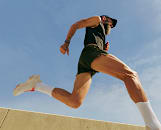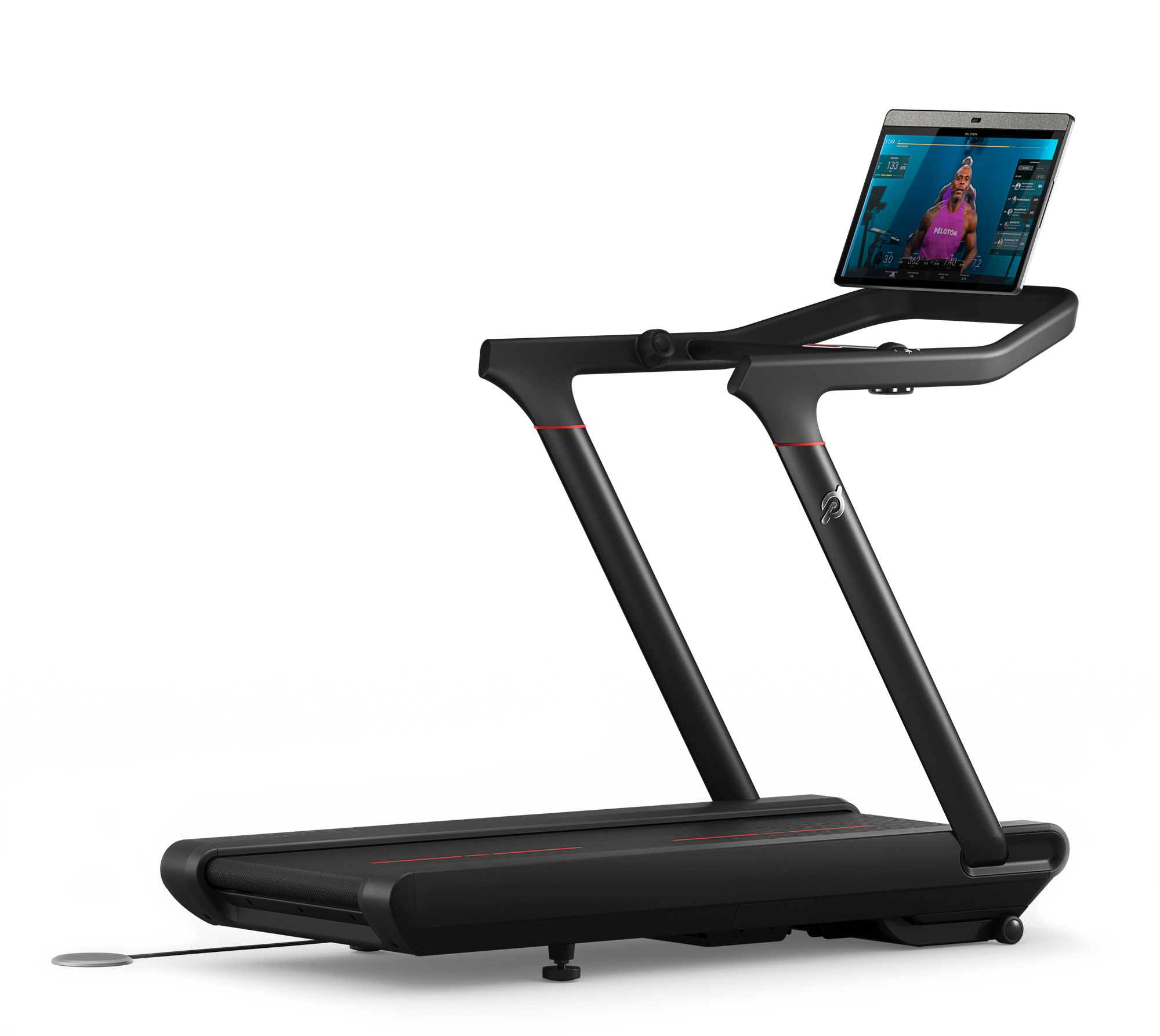
jeffbergen/E+ via Getty Images
How to Figure Out Your One Rep Max—and Unlock Even More Strength
Calculate your one rep max and use it to get stronger than ever before.
By Lauren Mazzo•
What Is a One Rep Max?
Why Your One Rep Max Is Important for Strength Training
How to Find or Calculate Your One Rep Max
One Rep Max Benchmarks
How to Use Your One Rep Max to Guide Your Strength Training
How to Improve Your One Rep Max
Takeaway
The phrase “one rep max,” often abbreviated to 1RM, gets thrown around a good deal in the workout world—though your 1RM is something you definitely don’t want to literally throw around.
Discover more ways to reach your goals with Peloton
That’s because it refers to the maximum amount of weight you can lift for just one repetition—which is to say, for many people, pretty darn heavy. As you might guess, knowing your one rep max is of utmost importance to elite athletes or those involved in strength sports like powerlifting; however, the rise in popularity of recreational strength training means the concept is becoming more widely known. You might hear about 1RMs on TikTok, in a Peloton strength class, or from a weightlifter friend.
If you’ve never lifted more than a 20 pound dumbbell, you might think your 1RM doesn’t matter. The truth? One rep max training isn’t for everybody, but it can help you level up your strength work if getting stronger is your ultimate goal. Here’s everything you need to know about 1RMs, and whether or not you need it to reach your own personal best.
What Is a One Rep Max?
“A one-rep max is the maximum weight you can lift for just one repetition with good form. It's testing the peak of your strength for a specific movement,” explains Peloton instructor Logan Aldridge. Research shows that the one rep max is a reliable test of muscular strength—i.e., your ability to exert force on an external object or resistance (not to be confused with other markers of fitness, such as muscular endurance, muscle size, power, or explosiveness). You can measure your 1RM for any strength exercise, though it’s most commonly used to gauge maximal strength in classic compound exercises: namely, the squat, deadlift, and bench press.
Why Your One Rep Max Is Important for Strength Training
In general, knowing your one rep max allows you to track progress and set goals, says Brian Sutton, who oversees the development of certification and continuing education courses at the National Academy of Sports Medicine (NASM).
Powerlifters, Olympic weightlifters, and other strength athletes often train specifically to increase their 1RM so they can lift the maximum amount in a competitive setting; however, you can benefit from knowing your one rep max even if you don’t have the intention of actually trying to lift it. “It becomes a reference point to determine the correct weights to use for different training goals like building strength or gaining muscle mass, endurance, or power,” Logan explains. “It’s helpful for tailoring and customizing your workouts to maximize results based on the intended stimulus.” For example, if you want to build muscle with hypertrophy training, exercise pros often recommend doing 8-12 reps using weights that are 65-85 percent of your one-rep max. But if you don’t know your 1RM, that recommendation isn’t very useful.
“By knowing the maximum weight an individual can lift, personal trainers and coaches can program training intensities as a percentage of their client’s 1RM,” Sutton explains. “This helps ensure the training is challenging enough to promote strength adaptations but not too heavy to compromise technique and safety.” This type of training can support increases in your maximum strength, build muscle mass, and improve performance in strength-based sports.
How to Find or Calculate Your One Rep Max
The classic way to determine your one rep max for a specific exercise is to perform a 1RM strength test. ”This method involves progressively increasing the weight and performing fewer repetitions until you reach failure or can’t complete another rep with proper form,” Sutton explains. For example, you’d start with a weight you can comfortably lift for ten reps. Then, rest, increase the weight, and perform six reps. You’d keep increasing until you reach a weight where you can only perform one rep. The weight used for that last successful repetition is an estimate of your 1RM.
Sound brutal? Well, it’s certainly not easy. For that reason, Sutton says a 1RM assessment is not necessary for individuals with general health and fitness goals. “This assessment most applies to those seeking to assess their maximal strength capabilities,” he says.
Luckily, there’s another option. If you want to get an idea of your one rep max to guide your training, instead of manually testing, you can get an estimate using math or a 1RM calculator like the one offered online by NASM. You’ll still need to do a little lifting, though. Here’s how to find your 1RM, according to NASM.
Step 1: Try a Lighter Weight
First, choose a weight that you know you can lift for a certain number of repetitions (say, five to eight) with good form. Aim for a load you can lift for no more than 10 repetitions, as going above that number can reduce accuracy, per NASM.
Step 2: Test Yourself for Reps
After completing a proper warm-up, perform the lift, and take note of the maximum number of repetitions you can do with good form. For example, let's say you try to lift 100 pounds for eight reps, but you only make it to six with good form or before feeling like you have to stop. That’s fine—you’ll use six as the number of reps in the next step.
Step 3: Calculate Your 1RM
At this point, you can plug your data (weight lifted and repetitions) into a one rep max calculator, like the one offered by NASM, or you can do a little math. If you’re going the old-school route, there are several different formulas you can use to calculate your 1RM. The below method, recommended by NASM, uses a variation of the Epley formula.
1RM = (weight lifted × reps / 30.48) + weight lifted
For example, if you can lift 135 pounds (a standard barbell with 45-pound plates on each side) for six reps, your 1RM calculation would look like this:
1RM = (135×6 / 30.48) + 135
1RM = 162 lbs
Keep in mind that this is an estimate. You’ll get a different estimated 1RM depending on the formula used and which lift you’re performing. Also note that none of these methods take into account factors like age, gender, weight, or training history.

Peloton App
Access thousands of classes with no equipment needed.
One Rep Max Benchmarks
It’s common to see benchmarks online that lump you into a certain category based on how much you can lift according to your 1RM. Sutton recommends approaching these standards with caution.
“One rep max benchmarks for the bench press, squat, and deadlift are hard to quantify because they vary depending on an individual’s age, gender, health, body weight, and training experience,” he says. Moreover, check out the standards listed on different websites, and you’ll see a lot of conflicting information. “Focusing on personal progress and improvement over time is more important than comparing yourself to online benchmarks,” he says.
If you really, really want something to measure up to, NASM offers the following benchmarks for the three major lifts: bench press, squat, and deadlift.
Bench Press
Beginner: 40-70 kg / 88-154 lbs
Intermediate: 70-100 kg / 154-220 lbs
Advanced: 100-130 kg / 220-287 lbs
Elite: 130+ kg / 287+ lbs
Squat
Beginner: 50-85 kg / 110-187 lbs
Intermediate: 85-125 kg / 187-276 lbs
Advanced: 125-170 kg / 276-375 lbs
Elite: 170+ kg / 375+ lbs
Deadlift
Beginner: 60-100 kg / 132-220 lbs
Intermediate: 100-140 kg / 220-308 lbs
Advanced: 140-180 kg / 308-397 lbs
Elite: 180+ kg / 397+ lbs
How to Use Your One Rep Max to Guide Your Strength Training
First, you can use your 1RM to determine the appropriate training intensities (i.e., how much weight to lift) for exercises, Sutton says. This helps ensure you’re working with the right load to reach your personal goals. It’s usually expressed as a percentage of your 1RM, and affects how many reps and sets you’ll do. (Pro tip: If you calculate your 1RM on the NASM website, you’ll also get a table that lists the amount of weight equivalent to different percentages of your 1RM.)
Exactly how much you should lift and how many reps and sets you do will depend on your goals, abilities, and the workout and exercise in question. However, as a general framework, the American College of Sports Medicine (ACSM) recommends the following:
To promote maximal strength:
Beginner/Intermediate: Lift 60-70 percent of your 1RM for 8-12 reps.
Advanced: Lift 80-100 percent of your 1RM.
To promote muscle endurance:
Beginner/Intermediate: Lift less than 70 percent of your 1RM for 10-15 reps.
Advanced: Lift less than 70 percent of your 1RM for 10-25 reps.
To prompt hypertrophy (muscle growth):
Beginner/Intermediate: Lift 70-85 percent of your 1RM for 1-3 sets of 8-12 reps.
Advanced: Lift 70-100 percent of your 1RM for 3-6 sets of 6-12 reps.
Second, you can use your one rep max to monitor your progress over time. “By regularly testing your 1RM, you can measure improvements in strength and adjust your training accordingly,” Sutton says. This helps you set realistic goals and monitor your progress, whether you’re hoping to build total-body strength or specifically increase your 1RM.

Jacob Wackerhausen/iStock/Getty Images Plus via Getty Images
How to Improve Your One Rep Max
On that note, if you want to increase your one rep max, you’ll need a strategic approach that combines proper technique, progressive overload, and adequate recovery, Sutton says.
Prioritize Form
If you want to lift heavier, you’ll need to make sure your form is on point. “Poor form can limit your strength potential and increase your risk of injury,” Sutton says. It’d be smart to enlist the help of a certified exercise professional to make sure you’re moving well before trying to pick up really heavy weights.
Progress Carefully
You’ll also want to progress slowly and methodically using progressive overload, which entails gradually increasing the intensity of your workouts over time. “This can be achieved by increasing the weight lifted, the number of repetitions performed, or your training volume (the total amount of work you do),” Sutton explains. “Progressive overload stimulates your muscles to adapt and grow stronger. However, it’s crucial to progress gradually to avoid injury and allow your body to adapt.”
How do you know when to increase the amount of weight you’re lifting? If you’re training at a specific percentage of your 1RM, the ACSM recommends that you increase the load by 2-10 percent if you’re able to do one or two reps (with good form) over the number you were trying to complete.
Follow a Plan
Following a strength-focused workout plan can help guide you through the process of progressive overload and ensure you’re training consistently enough to see results—at least three times per week is ideal, according to the ACSM. Any resistance training is likely to help you get stronger (especially if you’re a beginner or intermediate exerciser) but to truly optimize your strength gains, you’ll want to focus on doing a lower number of reps (think: 1-5 reps per set) with heavy loads (at least 70 percent of your 1RM).
Keep in mind that you won’t see changes in your 1RM overnight. One study published in Sports Medicine found that significant improvements take 8-12 weeks.
Don’t Discount Recovery
“Allow your body time to recover and adapt between training sessions,” Sutton says. “Rest, nutrition, and sleep are essential for muscle repair and growth. Overtraining or not allowing enough recovery time can hinder progress and increase your risk of injury.” Experts recommend taking at least one or two rest days per week, but you may also find you need to skip a workout if you’re too sore from lifting in the days prior.
Takeaway
If you take one thing away from this, heed these words of wisdom from Logan about 1RMs: “It's a tool, not a rule,” he says. “You don't need to chase a 1RM in every workout. Think of it as a helpful guide to lift smarter and focus on gradual gains over time. Then it becomes a great observable and measurable metric to monitor and track your strength progress.”
If you love the idea of increasing your one rep max, that’s a solid and very worthy fitness goal—it just may be difficult to tackle on your own, especially if you’re not well-versed in resistance training. “Working with a qualified personal trainer or coach can provide guidance and help set realistic and attainable goals based on your abilities and circumstances,” Sutton says.
On the other hand, if you’re strength training to, yes, get stronger, but mostly for longevity purposes and to maintain functional fitness while living a long and physically active life, there’s no pressure to dial in on your 1RM. As long as you feel challenged during your strength work, you’re already moving toward a mightier future—no max required.

Peloton App
Access thousands of classes with no equipment needed.
This content is for informational and educational purposes only and does not constitute individualized advice. It is not intended to replace professional medical evaluation, diagnosis, or treatment. Seek the advice of your physician for questions you may have regarding your health or a medical condition. If you are having a medical emergency, call your physician or 911 immediately.
Our Products
Level up your inbox.
Subscribe for a weekly dose of fitness, plus the latest promos, launches, and events.
By providing your email address, you agree to receive marketing communications from Peloton.
For more about how we use your information, see our Privacy Policy.












